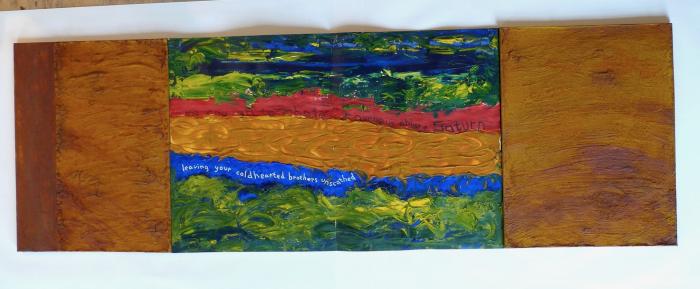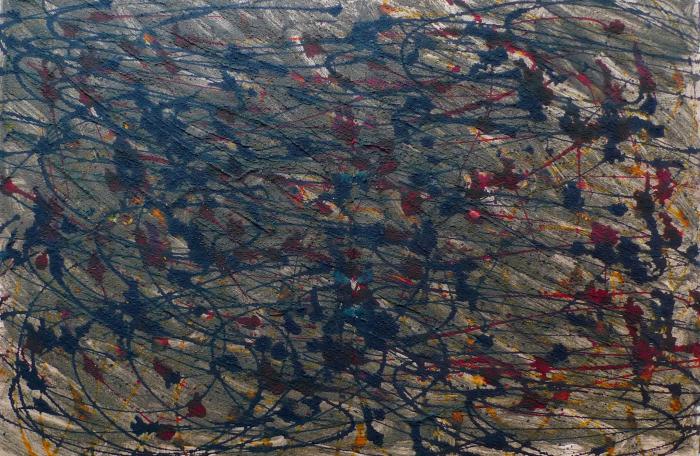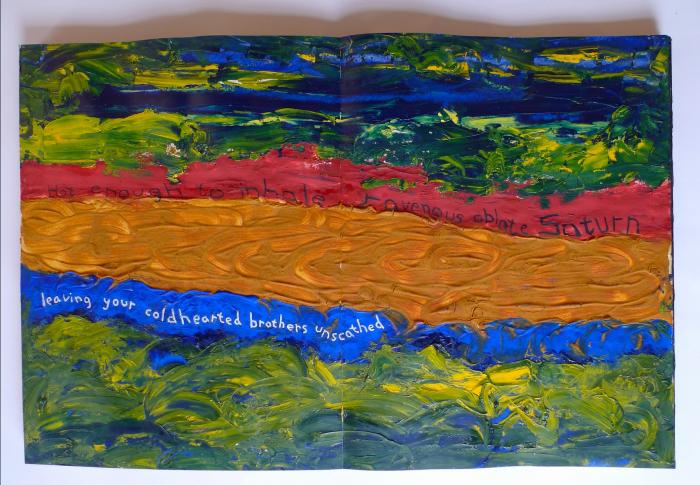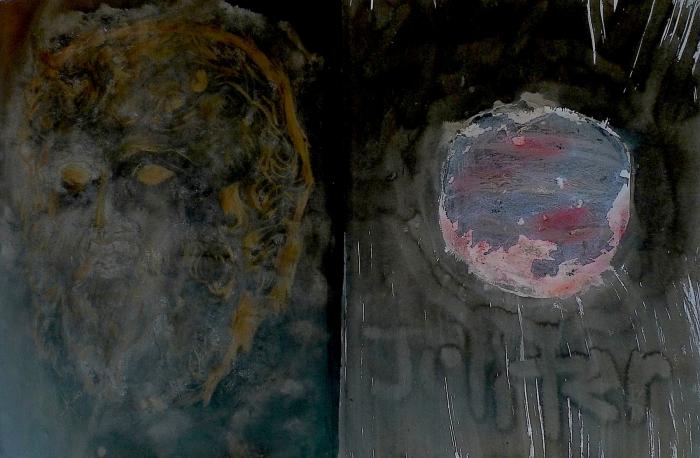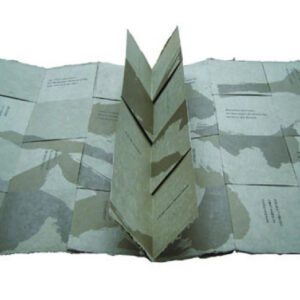Iupiter
Iupiter
Date
2013
Edition Size
unique
Media
Hand-painting, Ink, Natural Pigments, Rubbing
Paper
Pergamon acid free paper
Binding
Accordion
Format
Artist Book
Dimensions
18.25 × 14 × 1.25 in
Location
Brooklyn, NY
Publisher
Organik
Collection
Unique Books$ 6,800.00
Unavailable
View Collectors
University of Central Florida (UCF)
Iupiter (the ancient Roman spelling of Jupiter) collages and interweaves various contexts, interpretations, and perspectives regarding the planet Jupiter, the Roman God Iupiter, and the (freely and loosely) imagined voice and perspective of the Roman historian Livy.
Unlike most contemporary artists’ books, Iupiter is not printed, but hand-painted and references painting and sculpture rather than printmaking. Thus another layer of the hand-painted book consists of the aesthetic references to various artists throughout history which are present in the paintings.
Iupiter is part of “The Planets” series of unique painted books by Organik (the collaborative art group of Kurt Allerslev, Laura Smith, Marshall Weber, and Christopher Wilde), though it is a solo effort by Weber (including the poem). The book is in the collection of the University of Central Florida with many other Organik books. Venus is in the collection of the University of Miami, and Ganymede’s Jubilee is at the University of California at Santa Barbara. Further planet books are being conceived.
The book has a leather magnet secured, closed spine binding with an accordion fold structure. The binding can be “unhooked” and transforms from a functioning codex to a large frieze painting (in the specific classic definition of the word “frieze”.)
The primary media are: Windsor Newton oil paints, turmeric and cayenne suspensions, spice and ochre rock chalks in PVA and water pigments, and Sumi and other inks, on Pergamon acid-free paper. The binding is designed by Marshall Weber and produced by Sophia Kramer.
The covers feature thick impasto layers of cayenne and turmeric pigments and emit the scent of those spices. The thick cracking paint references the painter Antoni Tapies.
The front end pages are formed by a palette knife oil painting that refers both to Golden Era fantasy/science fiction illustration and to Gerhard Richter.
The title page is made with red ochre rock from the Warange Basin in Australia ( a reference to the “Mars” book, God and planet), Sumi and other inks, oil pastels, and rubber stamp lettering. The title painting (in it monumentalism) obliquely evokes Symbolist painting and Caspar David Friedrich.
Page 1, “Blood shot eye of Iupiter
huge spectral”.
A polished palette knife oil painting with various markers and Sumi ink, referencing psychedelia.
Page 2, “unsolid,
largest minded turbulent
your vaporous ambition optimistic”
Media: cayenne, cinnamon, and turmeric pigments, marker pen, charcoal, pastels.
Influenced by Anselm Kiefer.
Page 3, “struggling to compress into a sun
dying to become a star
enlightening troublesome Venus and arrogant Mars”
Media: cinnamon, mustard and turmeric pigments, Sumi ink.
Influenced by Ann Carter.
Page 4, “hot enough to inhale ravenous oblate Saturn
leaving your cold hearted brothers unscathed”
Media: oil paint, sumi ink, marker pen
Page 5, “as I was left
by history
and Augustus
Romulus Denied
alone and orbiting
the calendar empire”
Livy XXIII-XI
(Note that this poem is in no way related to the generally accepted verses of Livy’s actual The History of Rome, (Book 23, chapter 9). I have taken liberties with the probable life history of Titus Livius Patavinus (AKA Livy, 59 BC-AD 17). In this poem about Iupiter I imagine Livy, (who was (along with his family and hometown [Patavinus, now Palermo] a solid supporter of the Republic and Pompey, but who wound up working under the auspices of Emperor Augustus) embedding all his more subversive introspections and doubts into these verses.”
Media: cinnamon, mustard and turmeric pigments, sumi ink, marker and ink pens, various dyes.
Influenced by a visit to the Noguchi Museum in Queens, Brooklyn, NY.
Page 6, Media: bronze wax stick, sumi ink, photo-collage, various dyes.
Page 7, Media: henna pigments, various sumi inks and dyes.
Thanks to curator/librarians Cristina Favretto and Laila Miletic-Vejzovic for their ongoing support of the artworks of Organik.



